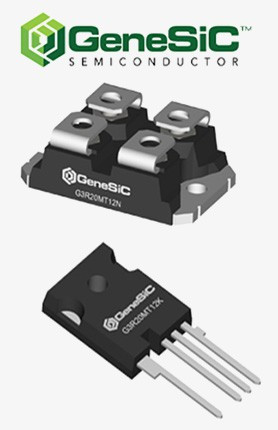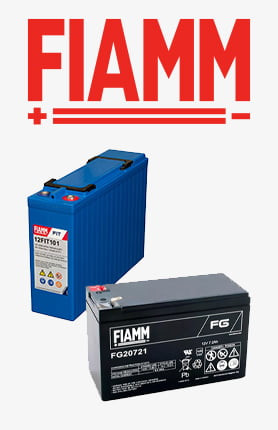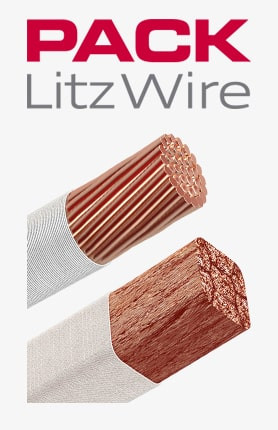-
BackX
-
Components
-
-
Category
-
Semiconductors
- Diodes
- Thyristors
-
Electro-insulated Modules
- Electro-insulated Modules | VISHAY (IR)
- Electro-insulated Modules | INFINEON (EUPEC)
- Electro-insulated Modules | Semikron
- Electro-insulated Modules | POWEREX
- Electro-insulated Modules | IXYS
- Electro-insulated Modules | POSEICO
- Electro-insulated Modules | ABB
- Electro-insulated Modules | TECHSEM
- Go to the subcategory
- Bridge Rectifiers
-
Transistors
- Transistors | GeneSiC
- SiC MOSFET Modules | Mitsubishi
- SiC MOSFET Modules | STARPOWER
- Module SiC MOSFET ABB’s
- IGBT Modules | MITSUBISHI
- Transistor Modules | MITSUBISHI
- MOSFET Modules | MITSUBISHI
- Transistor Modules | ABB
- IGBT Modules | POWEREX
- IGBT Modules | INFINEON (EUPEC)
- Silicon Carbide (SiC) semiconductor elements
- Go to the subcategory
- Gate Drivers
- Power Blocks
- Go to the subcategory
- Electrical Transducers
-
Passive components (capacitors, resistors, fuses, filters)
- Resistors
-
Fuses
- Miniature Fuses for electronic circuits - ABC & AGC Series
- Tubular Fast-acting Fuses
- Time-delay Fuse Links with GL/GG & AM characteristics
- Ultrafast Fuse Links
- Fast-acting Fuses (British & American standard)
- Fast-acting Fuses (European standard)
- Traction Fuses
- High-voltage Fuse Links
- Go to the subcategory
- Capacitors
- EMI Filters
- Supercapacitors
- Power surge protection
- TEMPEST emission revealing filters
- Surge arrester
- Go to the subcategory
-
Relays and Contactors
- Relays and Contactors - Theory
- 3-Phase AC Semiconductor Relays
- DC Semiconductor Relays
- Controllers, Control Systems and Accessories
- Soft Starters and Reversible Relays
- Electromechanical Relays
- Contactors
- Rotary Switches
-
Single-Phase AC Semiconductor Relays
- AC ONE PHASE RELAYS 1 series| D2425 | D2450
- One phase semiconductor AC relays CWA and CWD series
- One phase semiconductor AC relays CMRA and CMRD series
- One phase semiconductor AC relays - PS series
- Double and quadruple semiconductor AC relays - D24 D, TD24 Q, H12D48 D series
- One phase semiconductor relays - gn series
- Ckr series single phase solid state relays
- One phase AC semiconductor relays for DIN bus - ERDA I ERAA series
- 150A AC single phase relays
- Rail Mountable Solid State Relays With Integrated Heat Sink - ENDA, ERDA1 / ERAA1 series
- Go to the subcategory
- Single-Phase AC Semiconductor Relays for PCBs
- Interface Relays
- Go to the subcategory
- Cores and Other Inductive Components
- Heatsinks, Varistors, Thermal Protection
- Fans
- Air Conditioning, Accessories for Electrical Cabinets, Coolers
-
Batteries, Chargers, Buffer Power Supplies and Inverters
- Batteries, Chargers - Theoretical Description
- Modular Li-ion Battery Building Blocks, Custom Batteries, BMS
- Batteries
- Battery Chargers and Accessories
- Uninterruptible Power Supply and Buffer Power Supplies
- Inverters and Photovoltaic Equipments
- Energy storage
- Fuel cells
- Lithium-ion batteries
- Go to the subcategory
-
Automatics
- Spiralift Lifts
- Futaba Drone Parts
- Limit Switches, Microswitches
- Sensors, Transducers
-
Infrared Thermometers (Pyrometers)
- IR-TE Series - Water-proof Palm-sized Radiation Thermometer
- IR-TA Series - Handheld Type Radiation Thermometer
- IR-H Series - Handheld Type Radiation Thermometer
- IR-BA Series - High-speed Compact Radiation Thermometer
- IR-FA Series - Fiber Optic Radiation Thermometer
- IR-BZ Series - Compact Infrared Thermometers
- Go to the subcategory
- Counters, Time Relays, Panel Meters
- Industrial Protection Devices
- Light and Sound Signalling
- Thermographic Camera
- LED Displays
- Control Equipments
- Go to the subcategory
-
Cables, Litz wires, Conduits, Flexible connections
- Wires
- Cable feedthroughs and couplers
- Litz wires
- Cables for extreme applications
- Sleevings
-
Braids
- Flat Braids
- Round Braids
- Very Flexible Flat Braids
- Very Flexible Round Braids
- Cylindrical Cooper Braids
- Cylindrical Cooper Braids and Sleevings
- Flexible Earthing Connections
- Galvanized and Stainless Steel Cylindrical Braids
- PCV Insulated Copper Braids (temp. up to 85C)
- Flat Aluminium Braids
- Junction Set - Braids and Tubes
- Go to the subcategory
- Traction Equipment
- Cable Terminals
- Flexible Insulated Busbars
- Flexible Multilayer Busbars
- Cable Duct Systems
- Go to the subcategory
- View all categories
-
Semiconductors
-
-
- Suppliers
-
Applications
- CNC Machine Tools
- DC and AC Drives (Inverters)
- Energetics
- Energy bank
- Equipment and Components for Hazardous Areas [Ex]
- Equipment for Distribution, Control and Telecommunications Cabinets
- HVAC Automation
- Induction Heating
- Industrial Automation
- Industrial Protective Devices
- Machines for Drying and Wood Processing
- Machines for Thermoforming Plastics
- Mining, Metallurgy and Foundry
- Motors and Transformers
- Power Supplies (UPS) and Rectifier Systems
- Printing
- Temperature Measurement and Regulation
- Test and Laboratory Measurements
- Tram and Railway Traction
- Welding Machines
-
Assembly
-
-
Inductors
-
-
Induction devices
-
-
Service
-
- Contact
- Zobacz wszystkie kategorie
What role does induction heating play in the promotion of wind turbines?

Oil crisis, energy crisis, global warming. We all recognize the need to find sustainable alternatives to fossil fuels. One of the most promising alternatives is wind.
Wind energy is clean, free and the supply is unlimited. There is only one problem. How can we harvest it? We will try to explain how modern technology harvests energy from wind and how induction heating can help us do so.
Wind energy is nothing new. For millennia, mankind has used it to move ships. And, of course, windmills have been grinding grain, pumping water and irrigating fields for centuries. What's new, however, is the prospect of using wind to supply electricity to entire cities - which isn't as far off as you might think.
For example, according to new data from the Global Wind Energy Council (an international wind energy advocacy organization), 60.4 GW of wind power capacity was installed worldwide in 2019, a 19 percent increase over 2018 installations and the second best year for wind power on record. Total installed wind power capacity worldwide is now more than 651 GW - a 10 percent increase over 2018.
These numbers are impressive. But what role has induction technology played in promoting green wind power? To answer this question, we must first look at the structure of a typical modern wind turbine. Essentially, a wind turbine consists of tower-mounted rotors that, when rotated by the wind, turn a low-speed shaft that is connected via a gearbox to a high-speed shaft that operates a generator.
To begin with, a large bearing is needed to keep the rotors turning, but not just any bearing will do. Because of the high loads and torque, the rotor bearing must be custom hardened - something for which the induction heating process is ideal.
Induction heating in wind turbines
The heart of any wind turbine is the gearbox. Here, the quiet rotation of the rotor blades is converted into the approximately 1500 revolutions per minute required by the generator. Induction hardening systems can be used to harden the teeth of the key motor responsible for keeping the rotor in the direction of the wind. The yaw motor rotates the rotors to the correct position using a cam wheel that connects to a large yaw bearing mounted on the turbine tower. An electronic controller, which is constantly fed with data from an anemometer mounted on the nacelle, tells the yaw motor when to turn the rotors.
Synergy of induction heating and wind energy
The contribution of induction heating to wind turbines is not limited to hardening components. A generator, for example, requires brazing, an operation easily performed by most commercially available equipment. Most manufacturers allow operators to braze even the hardest-to-reach generator parts. Additionally, the use of induction heating greatly reduces process time and increases productivity.
There is much talk about the "green" or "environmentally friendly" nature of wind turbines, but induction technology has the potential to make this energy source even greener. This is because induction itself is an inherently clean process. It eliminates open flames (and the smoke and fumes associated with them), reduces the need for fuel transportation, and promotes safer and healthier workplaces. Induction is also energy efficient. There is no massive heat loss associated with stoves and ovens. In fact, induction and wind energy form a "virtuoso circle" - Clean electricity from the wind powers induction heating systems, which in turn produce turbines that generate clean electricity.
Related posts
 Now available – DC/DC converters from PREMIUM
Now available – DC/DC converters from PREMIUM
 New release in DACPOL lighting for lathes – Kira covers
New release in DACPOL lighting for lathes – Kira covers




Leave a comment